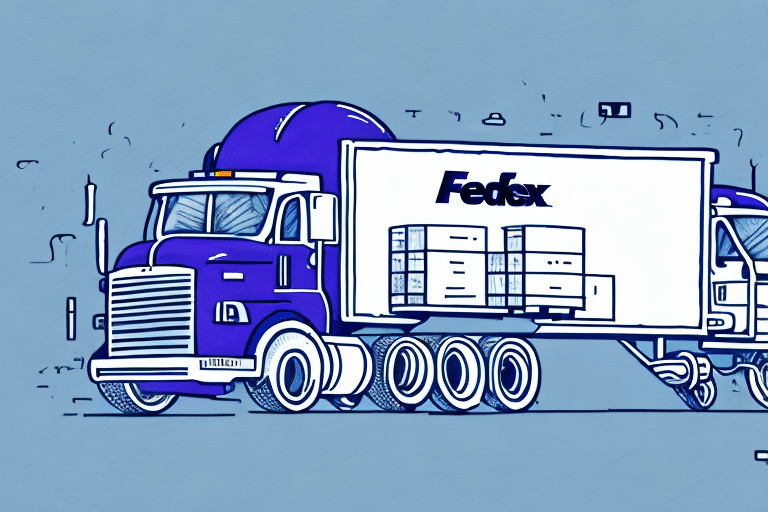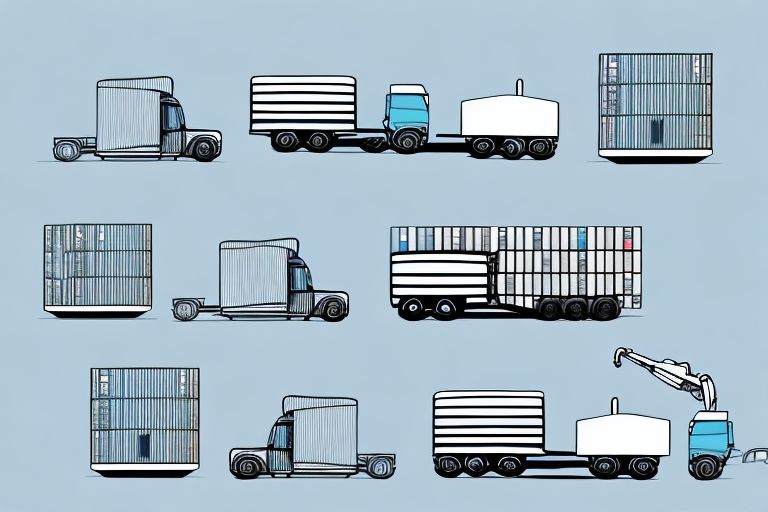How to Use Bundling Shipments to Negotiate Better Shipping Rates with FedEx
Shipping costs can be a significant expense for businesses of all sizes. To reduce these costs, savvy business owners and logistics managers are increasingly turning to bundling shipments as a way to negotiate better rates with carriers such as FedEx. In this article, we'll explain what bundling shipments is, how it works, and the advantages it offers businesses looking to optimize their shipping processes and reduce costs.
Explaining the Concept of Bundling Shipments
Bundling shipments refers to the practice of consolidating multiple shipments into a single package, which is then shipped to the destination. The process can involve combining individual orders from the same customer, consolidating multiple orders from different customers, or grouping together orders going to the same location. Bundling shipments can help businesses reduce both the number of packages they ship and the total weight of those packages, leading to significant savings on shipping costs.
In addition to cost savings, bundling shipments can also have environmental benefits. By reducing the number of packages being shipped, businesses can lower their carbon footprint and contribute to a more sustainable shipping industry. Additionally, bundling shipments can help improve delivery times and reduce the risk of lost or damaged packages, as there are fewer packages to track and handle.
How Bundling Shipments Can Benefit Your Business
Bundling shipments can benefit businesses in many ways. First and foremost, it can help reduce shipping costs, a significant expense for most businesses. By consolidating multiple shipments into a single package, businesses can take advantage of volume discounts, negotiate better rates with carriers like FedEx, and reduce packaging and handling costs. Additionally, bundling shipments can help businesses streamline their shipping processes, reduce the number of shipments they need to manage, and simplify their overall logistics operations, saving time, resources, and money.
Another benefit of bundling shipments is that it can help businesses reduce their carbon footprint. By consolidating multiple shipments into a single package, businesses can reduce the number of vehicles needed to transport their goods, which in turn reduces fuel consumption and emissions. This not only benefits the environment but can also improve a business's reputation as a socially responsible company. Furthermore, bundling shipments can help businesses improve their inventory management by reducing the amount of stock they need to hold, freeing up valuable warehouse space and reducing the risk of overstocking or stockouts.
The Advantages of Using FedEx for Shipping
FedEx is one of the most popular shipping carriers in the world, offering a range of shipping services and options to businesses of all sizes. FedEx provides reliable and timely delivery, advanced tracking and monitoring, flexible shipping options, and excellent customer support. Additionally, FedEx offers a range of volume discounts and incentives to businesses that ship in high volumes, making it an attractive option for businesses looking to bundle shipments and negotiate better rates.
Another advantage of using FedEx for shipping is their commitment to sustainability. FedEx has implemented a number of initiatives to reduce their carbon footprint, including investing in alternative fuel vehicles, optimizing delivery routes, and using eco-friendly packaging materials. By choosing FedEx as your shipping carrier, you can feel good about supporting a company that is actively working to reduce its impact on the environment.
Finally, FedEx offers a range of value-added services that can help businesses streamline their shipping processes and improve their bottom line. These services include customs clearance assistance, packaging and labeling services, and even fulfillment and warehousing solutions. By taking advantage of these services, businesses can save time and money while also improving their overall shipping efficiency.
Understanding the FedEx Shipping Rate System
FedEx's shipping rates are calculated based on various factors, including the weight and dimensions of the package, the destination and origin locations, the shipping service selected, and any additional services requested by the shipper. FedEx offers a range of shipping services, including ground, express, and international shipping, each with its own rates and fees. Additionally, FedEx offers a range of value-added services, such as insurance coverage, signature confirmation, and hazardous materials handling, each of which can affect the total cost of shipping.
It is important to note that FedEx also offers discounts for certain customers, such as those with high shipping volumes or those who use specific shipping services frequently. These discounts can significantly reduce the cost of shipping for eligible customers. Additionally, FedEx provides online tools and resources to help customers estimate shipping costs and compare rates for different services, making it easier to choose the most cost-effective shipping option for their needs.
Factors That Affect FedEx Shipping Rates
Several factors can affect the shipping rates offered by FedEx. For example, the weight and dimensions of the package can affect the cost of shipping, with heavier and larger packages typically costing more to ship. Similarly, the distance between the origin and destination locations, as well as the shipping service selected, can also affect the total cost of shipping. Other factors that can impact shipping rates include fuel surcharges, carrier fees, customs fees, and taxes.
Another factor that can affect FedEx shipping rates is the type of delivery service selected. For instance, if you choose a faster delivery option, such as overnight or two-day shipping, you can expect to pay more than if you choose a standard delivery service. Additionally, the time of year can also impact shipping rates, with peak seasons, such as the holiday season, often resulting in higher shipping costs due to increased demand.
It's also worth noting that the type of item being shipped can impact the shipping rate. For example, hazardous materials or fragile items may require special handling and packaging, which can increase the cost of shipping. Similarly, international shipments may be subject to additional fees and regulations, such as customs duties and taxes, which can also impact the total cost of shipping.
How to Negotiate Better Shipping Rates with FedEx
To negotiate better shipping rates with FedEx, businesses need to take several steps. First, they should optimize their packaging and bundling practices to reduce the weight and size of their packages, which can help reduce the cost of shipping. Second, businesses should research their shipping options and select the most appropriate service for their needs, balancing speed, cost, and reliability. Finally, businesses should develop a relationship with FedEx and negotiate custom shipping rates based on their volume and shipping needs.
Strategies for Maximizing Your Bundling Shipment Savings
To maximize your bundling shipment savings, there are several strategies you can use:
- Bundle shipments by destination: Take advantage of volume discounts by consolidating shipments going to the same area.
- Optimize packaging and labeling: Reduce the weight and size of your packages to lower shipping costs.
- Leverage tracking and monitoring technologies: Identify potential bottlenecks and inefficiencies in your shipping processes.
- Use automated shipping solutions: Streamline and simplify your logistics operations to reduce the risk of errors and delays.
Tips for Optimizing Your Packaging to Reduce Shipping Costs
Optimizing your packaging can help reduce the weight and size of your packages, leading to lower shipping costs. To optimize your packaging:
- Use lightweight and durable materials that provide adequate protection for your products.
- Pack products tightly and efficiently, using appropriate cushioning, void-fill, and wrapping materials.
- Label and mark your packages correctly to ensure they are handled and shipped properly.
Common Mistakes to Avoid When Bundling Shipments
While bundling shipments can be an effective way to reduce shipping costs, there are several common mistakes that businesses should avoid:
- Avoid indiscriminate bundling of shipments, as this can lead to greater complexity and higher costs.
- Properly label and document bundled shipments to avoid confusion and delays in transit.
- Do not assume that bundling shipments will always result in lower shipping costs; carefully evaluate the benefits and drawbacks of bundling in each individual case.
Best Practices for Managing and Tracking Bundled Shipments
Managing and tracking bundled shipments can be a complex and time-consuming process. To simplify this process, businesses should implement best practices such as:
- Using advanced tracking and monitoring systems.
- Implementing automated shipping solutions.
- Leveraging data analytics to identify potential bottlenecks and inefficiencies.
- Establishing clear communication protocols with customers and carriers to ensure everyone is informed about shipment status and expectations.
Calculating the Cost Savings of Bundling Shipments with FedEx
To calculate the cost savings of bundling shipments with FedEx, businesses should consider several factors:
- The volume and frequency of shipments.
- The weight and size of the packages.
- The shipping services and value-added services requested.
Additionally, compare the costs of current shipping practices to alternative shipping options, such as bundling shipments or using different carriers. By analyzing these factors, businesses can identify cost-saving opportunities and develop strategies for optimizing their shipping processes.
Real-World Examples of Businesses That Saved Money with Bundling Shipments
There are many examples of businesses that have successfully reduced shipping costs by bundling shipments:
- A clothing retailer reduced their shipping costs by over 20% by bundling multiple orders from the same customers into a single package.
- A technology company reduced shipping costs by 30% by bundling shipments going to the same location and negotiating custom rates with FedEx.
These examples demonstrate that bundling shipments can be an effective way to reduce shipping costs and optimize logistics operations for businesses of all types and sizes.
Frequently Asked Questions About Bundling Shipments with FedEx
Q: How does bundling shipments help reduce shipping costs?
A: Bundling shipments helps reduce shipping costs by consolidating multiple shipments into a single package, which can take advantage of volume discounts, reduce handling and packaging costs, and optimize logistics operations.
Q: How can businesses negotiate better shipping rates with FedEx?
A: Businesses can negotiate better shipping rates with FedEx by optimizing their packaging and bundling practices, researching their shipping options, and developing a relationship with FedEx to negotiate custom rates based on their volume and shipping needs.
Q: What are some common mistakes to avoid when bundling shipments?
A: Common mistakes to avoid when bundling shipments include indiscriminate bundling, poor labeling and documentation, and assuming that bundling shipments will always result in lower shipping costs.
In conclusion, bundling shipments can be an effective way for businesses to reduce shipping costs, optimize logistics operations, and improve the overall customer experience. To make the most of this practice, businesses should carefully evaluate their shipping needs, research their shipping options, optimize their packaging and bundling practices, and leverage the expertise and support of carriers like FedEx. By doing so, they can reduce costs, improve efficiency, and increase the profitability of their business.









